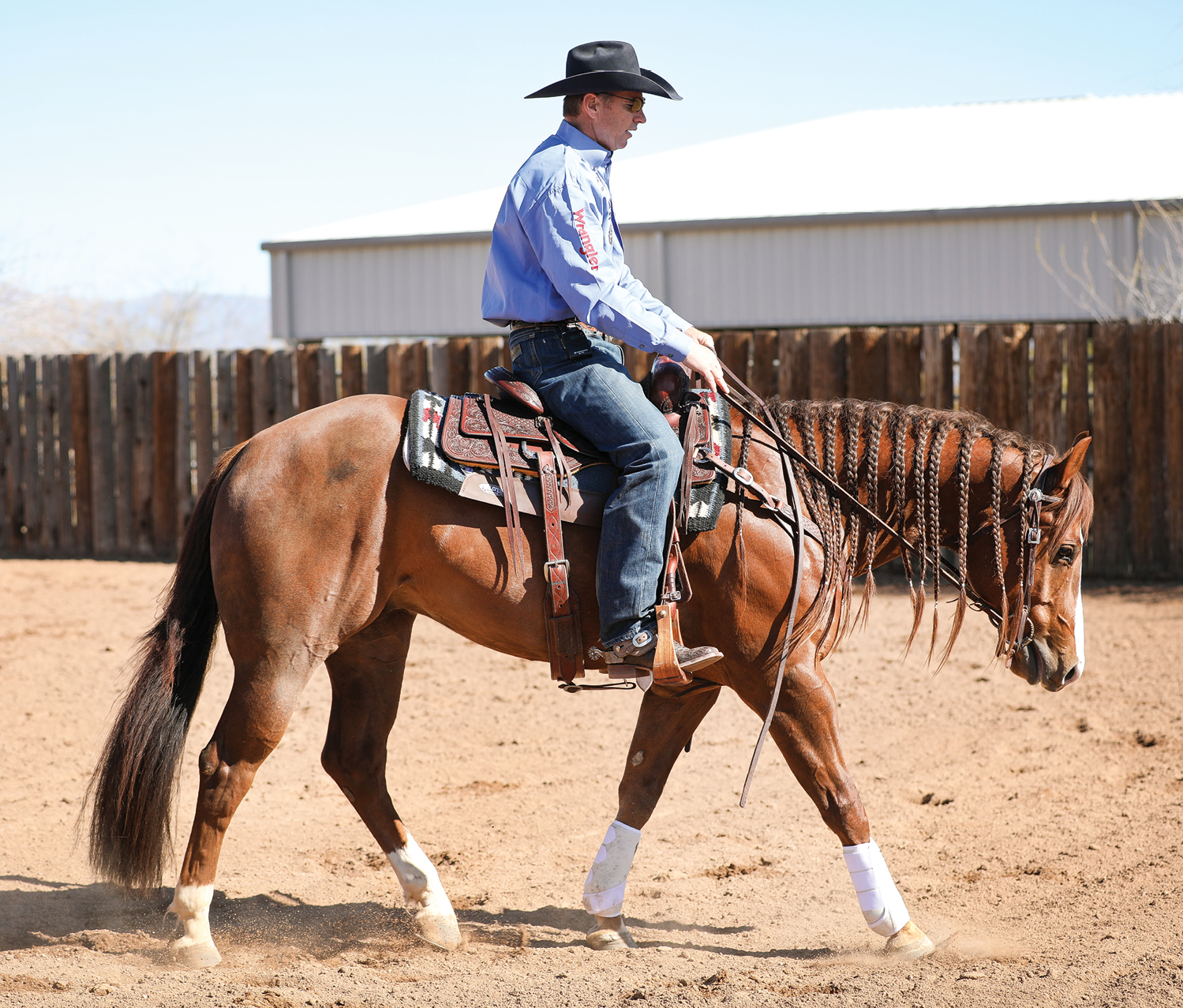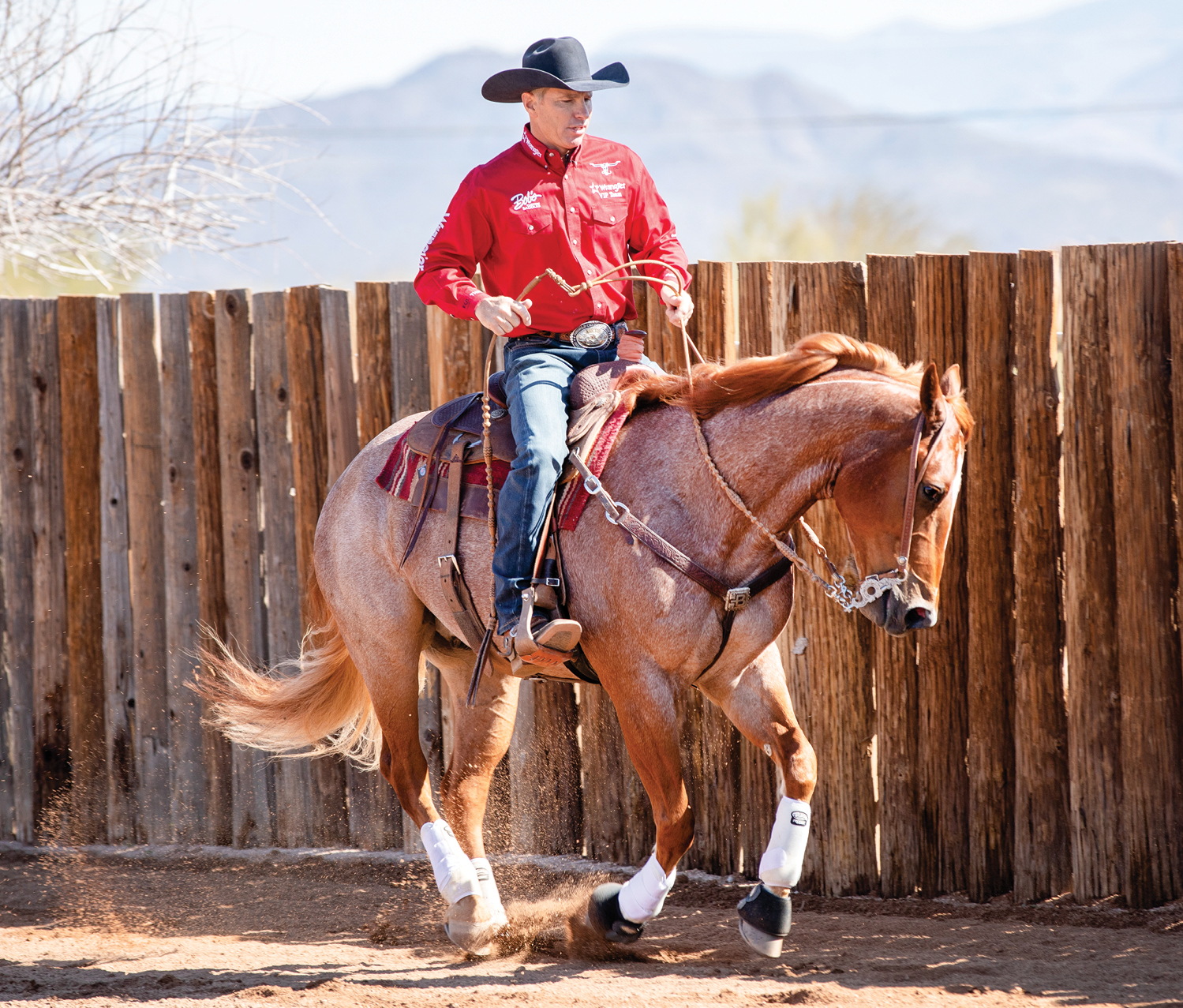When you’re riding at home, you want to focus more on your horse’s overall riding foundation and fundamentals, and less on putting the whole package together, like you might do at a horse show. By limiting the amount of information you’re giving your horse each session and focusing on fundamentals, you’re going to keep your horse fresh, happy, and liking his job.
I’m going to walk you through the steps I go through to warm up one of my cow horses at home and why it’s important that I reinforce those riding fundamentals before trying to work a live cow.
Warm Up Right
When it comes time to ride, you don’t just cinch up your horse, get on, and go to work. There’s some prep that needs to take place, so your horse and you are mentally and physically ready to get to work.
Spend some time trotting and loping around the arena on a loose rein to help your horse get comfortable with his surroundings and warm up his muscles. This is going to help him be prepared to learn. Each warmup varies. If you ride daily, it might be shorter than if you were getting on a horse that hasn’t been ridden in a few days or weeks. If you’re not able to ride every day, that warm up becomes even more critical.

Training at Home
My riding goals at home differ than they do in the show pen. At a show, I want to focus on having my horse perform the herd work, reined work, and fence work to the best of his ability. But at home, I want to focus only on a few fundamentals at a time. This is why I try to have a game plan on what it is I want to work on. If I need to work on reining maneuvers, my riding game plan will differ from when I work cattle.
Read More: Use the Leg-Yield to Solve Problems with Your Horse
Here I’m going to break down some of the maneuvers I work on when I’m prepping my horse for live cow work at home. This helps my horse get in tune with my body language and the signals I’m sending, so that he’s responding to my leg, hand, seat, and voice cues when it comes time to work a cow.
Once I’m warmed up, I trot my horse in a straight line and squeeze my feet to encourage forward motion. When it comes time to stop, I release my legs and sit deep in my seat. If he stops without me having to go to my reins, I know he’s listening to my cues the way I need him to. I back up a few steps to reinforce the stop, then turn, and go the opposite direction to test the stop again. If my horse doesn’t stop when I release my leg, I school that stop immediately.

After I turn my horse around and trot off again, this is a good time to test my neck-rein cue. When the rein touches his neck, he should look into the turn and turn swiftly. If he doesn’t, I take him into a full turn, and continue to turn him until he’s responsive before trotting him off in a straight line again.
More from Brad: Episode 35- The Ride Podcast
Now I can start to work on driving my pretend cow through the corner of my arena and down the fence. I maintain my correct lead through the corner, and have my horse slightly angled toward the fence—where his hips are farther away from the arena fence, and his nose is toward it. This is the same position I’ll be in when I’m driving my live cow down the arena.
To get his body in that position I use my outside leg to move the hip away from the wall and go to my hand to have his nose tilt slightly toward the wall. This also helps me create any space I might need when going down the fence. If I need to take some of the pressure off the cow, I can go to my hand and leg and push my horse away from the fence to create space; this also gives me the ability to steer him closer to it.






